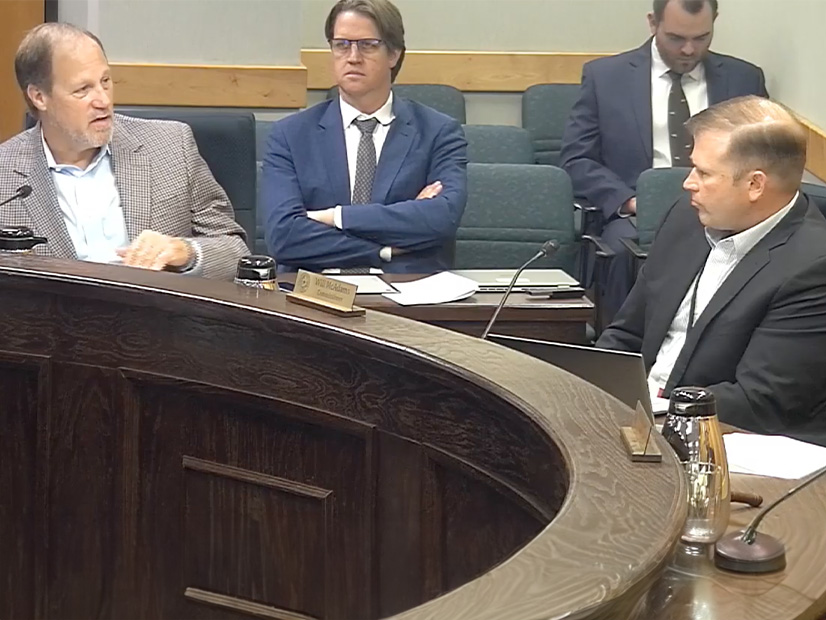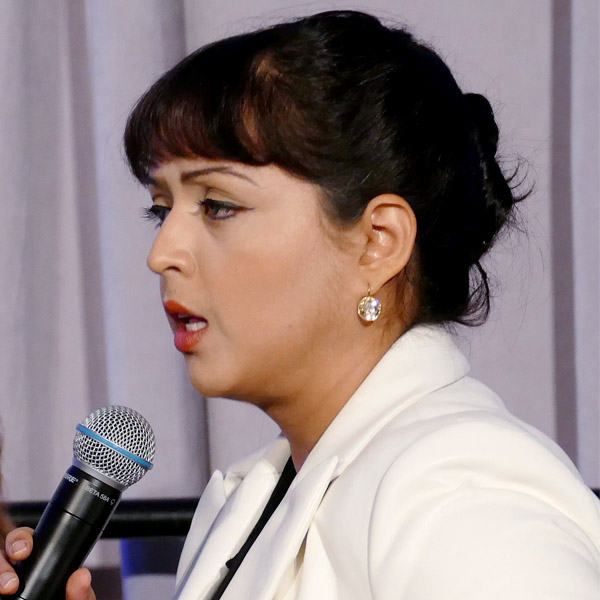
Texas regulators and ERCOT stakeholders last week celebrated a year-long study of aggregated distributed energy resources (DERs) that’s resulted in two virtual power plants (VPPs) qualified and able to provide dispatchable power to the state’s grid.
The Aggregate Distributed Energy Resources (ADERs) pilot project tested how consumer-owned, small energy devices, such as energy storage systems, backup generators, controllable electric vehicle chargers and smart thermostats and water heaters, can be aggregated virtually and participate as a resource in the wholesale electricity market (53911).
Eight aggregations (ADERS), totaling 7.2 MW, participated in the pilot project. Two ADERs with customers using Tesla Electric Powerwall storage systems have completed required testing and could provide energy and ancillary services through the third quarter. One is linked to Oncor’s distribution system in North Texas, the other to CenterPoint Energy’s system in Houston.
The other six ADERs are being commissioned.
CenterPoint Executive Vice President Jason Ryan, who chaired the 20-person task force, told the Public Utility Commission during its Thursday open meeting that the pilot project shows Texas is a leader in VPP implementation.
“I’m not talking about just the leader among states in this country, but really in the world. It really changes how customers are using the distribution grid,” he said.
“Every one of those customers, by investing in whole-home backup and then being participatory in the grid, is providing additional reliability services from a private investment and taking off the socialized value of the reliability standard. The growth of this pilot is also an incredibly important data point,” Tesla’s Arushi Sharma Frank said. “You have to be able to see a resource. It needs to be visible in the system, it needs to be visible to ERCOT, it needs to be visible to the distribution service providers operating the local system and it needs to be understood to be a part of wholesale price formation.”
She said the exchange of granular information between the consumers, ERCOT, distribution providers and other market participants has been invaluable.
“All of these things happening in nine months is progress on top of progress on top of progress of the kind that is taking the RTOs years to implement years,” Frank said. “Hopefully in the three years that this pilot progresses, the information that Texas will have collected on three disparate systems — retail energy distribution service, and the wholesale grid — will be incredibly valuable to the National Labs. You’ll be in the opposite position where instead of the National Labs coming to help you, you will be going to the National Labs and helping them figure out how to monetize DERs and put them into wholesale price formation.”
Frank said in a report that the project’s first phase allowed Tesla to “demonstrably assess” ADERs’ viability as providers of energy and reserves. However, Tesla also discovered the costs associated with maintaining a qualified scheduling entity (QSE) and servicing telemetry can be challenging on a small scale. She called for an increase in current QSE caps, noting ADERs’ break-even point of 15-20 MW is above that cap.
In a memo, PUC commissioner Will McAdams directed the task force and ERCOT to create a plan for the pilot’s second year, following the project’s principles.
“We would like to understand what performance metrics would need to be met to unlock expansion of grid services or size caps,” he said.
ERCOT Evaluating RMR Options
ERCOT CEO Pablo Vegas told the commission it may resort to issuing reliability must-run (RMR) contracts to ensure it has enough capacity to meet demand this winter.
The grid operator issued a market notice last week that said while it had determined a gas plant’s announced suspension would not create a reliability issue, it was conducting additional analysis to determine whether there’s a need for additional capacity from dispatchable resources for the upcoming season.
ERCOT pointed to increasing system demand and a continued reliance on variable output from renewable resources as creating the need for more analysis. It promised a decision by early October as to whether the resource would be able to suspend operations or be extended an RMR contract.
“We are looking at more broadly the needed capacity as we get into this winter season,” Vegas told the PUC. “There have been multiple units that have indicated a cease operations and mothballing status or retirement.”
Asked whether staff would evaluate a demand-side solution, Vegas responded affirmatively.
“If we move down this pathway, the requirement would be to evaluate any sort of capacity options, including the load-side,” he said. “Effectively, we would be seeking the most cost-effective solution or to close a risk if we identify one on capacity.”
Travis Kavulla, NRG Energy’s vice president of regulatory affairs and a former Montana state commissioner, tweeted that this would be the first time RMR, normally used for local reliability issues, would be used for system resource adequacy.
“This kind of creates a ‘Hotel California’ situation,” he said, referring to resources’ ability to leave. “Only CAISO has used RMR powers for this purpose.”
ERCOT said its reliability assessment of the Barney Davis 1 unit near Corpus Christi indicated it is not required to support transmission system reliability. The unit, which has a summer maximum sustainable rating of 292 MW, plans to indefinitely suspend operations on Nov. 24.
Any RMR contracts must be approved by the board.
ISO Prioritizes Market Changes
Vegas also shared development timelines for ERCOT work initiatives as a result of recently passed legislation that he called The Big Five: a reliability standard, a dispatchable reliability reserve service (DRRS), the performance credit mechanism (PCM), a multi-step floor to the operating reserve demand curve (ORDC) and real-time co-optimization (RTC).
“Those five initiatives together make up a suite of changes that are going to help to drive reliability and make changes to the market constructs that are designed to improve both operational flexibility as well as long-term resource adequacy,” Vegas said.
ERCOT will work with consultants to update a previous value-of-lost-load study and to perform a review of its cost of new entry metric, currently valued at $105,000/MW-year after a 2012 analysis. Commission staff plan to file a proposed rulemaking on a reliability standard based on the ISO’s study; the PUC will take up the proposal in January.
ERCOT has considered a reliability standard since a 2011 winter event and has long operated with a 13.75% target reserve margin based on a 0.1 loss-of-load expectation and a traditional dispatchable generation fleet. The PUC opened a docket (54584) earlier this year to evaluate and establish an appropriate reliability standard.
The grid operator’s staff has proposed a three-part framework that considers the duration and magnitude of a loss-of-load event besides the occurrence’s frequency. It’s intended to better quantify risks associated with an LOLE when intermittent resources comprise a large percentage of the generation fleet.
The commission already has approved the ORDC’s changes but it still must endorse a document that formalizes the two price floors. Staff will make the software changes in November and must file reports on performance metrics and DRRS’ effects in 2024 and 2025, respectively. (See Texas PUC Approves ERCOT’s ORDC Modifications.)
ERCOT staff and stakeholders will resume their work on RTC and energy storage resources’ state of charge, work delayed by the disastrous 2021 winter storm. The Real-time Co-optimization + Batteries Task Force will meet Sept. 8 with a 2026 deployment target. (See “Staff, Stakeholders Get Serious on RTC, Energy Storage,” ERCOT Technical Advisory Committee Briefs: Aug. 22, 2023.)
ERCOT also is developing a “framing document” outlining PCM decision points for the PUC. Vegas said staff will take the commission’s feedback and prepare a strawman proposal for a series of workshops with stakeholders and PUC work sessions. ERCOT and the market monitor will perform a cost-benefit analysis before the Texas Legislature next meets in 2025, after which protocols will be drafted.
Vegas said he expects it will take another two years to implement the PCM. The market construct would retroactively reward dispatchable generation that meet performance criteria during the tightest grid periods with incentive payments.
Asked whether RTC, a market tool that procures energy and ancillary services every five minutes, will still be needed when the PCM is deployed, Vegas said efficiency, reliability and market transparency are key factors.
“We should always be looking at the combination of tools we have to incentivize the goals of the ERCOT grid,” he said.
The DRRS is a non-spin ancillary service that supports system reliability and mitigates the use of reliability unit commitment. It is open to resources capable of running for at least four hours at their high sustained limit; being online and dispatchable no more than two hours after being called on; and with the dispatchable flexibility to address inter-hour operational challenges.
ERCOT plans to move nodal protocol revision requests through the stakeholder process this fall to codify the DRRS’ sub-type. Upon approval early next year, staff will make system changes and begin offering the service by Dec. 1, 2024.
PUC Rules Against SWEPCO
The commission gave Southwestern Electric Power Co. (SWEPCO) until Sept. 8 to explain why and how the recovery of carrying costs alone is tied to and adequately accounts for the PUC’s determination on the prudence of a recently retired coal plant (53931).
The order is related to SWEPCO’s application to reconcile fuel costs. An administrative law judge in July found the retirement decision to be prudent after the utility reached a partial settlement agreement resolving all other issues.
SWEPCO’s parent company, American Electric Power, announced the 580-MW Pirkey plant’s retirement in 2020. The unit, which sits in SPP’s Texas footprint, stopped operating in March. In May, the Texas commission rejected the utility’s application to build 237 MW of accredited renewable capacity at the Pirkey site. (See Texas PUC Rejects SWEPCO Application for Renewables at Pirkey.)
The PUC plans to take up the matter during its Sept. 28 open meeting.
The commission also denied SWEPCO’s rehearing request of its May denial of renewable resources at Pirkey, saying that their acquisition is not in the public interest (53625).
In other proceedings, the PUC:
-
- Gave El Paso Electric Co. until Sept. 23 to advise the commission what it intends to do with its application for proposed electric vehicle-ready pilot programs and tariffs following a recent law that addresses the operation of public EV charging stations and goes into effect on Sept. 1 (54614).
- Overturned an ALJ’s decision approving Wind Energy Transmission Texas’ interim wholesale transmission rates following appeals by Texas Industrial Energy Consumers and Steering Committee of Cities Served by Oncor (55029).


